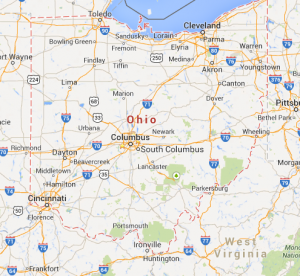Var-shō-vah Sleeps in Peace
By Joann Condit of Phoenix, AZ, USA

But know that the Lord has set apart the faithful for himself; the Lord hears when I call. Offer right sacrifices, and put your trust in the Lord. There are many who say, “O that we might see some good! Let the light of your face shine on us, O Lord!” You have put gladness in my heart more than when their grain and wine abound. I will both lie down and sleep in peace; for you alone, O Lord, make me lie down in safety. —Psalm 4:3, 5–8 NRSV, adapted
For many years, I had wanted to visit the fertile plains and gently rolling hills of Poland. I wanted to see the splendid mountains which nestled the storybook village of Zakopane. More than any other place, however, medieval Warsaw called to me.
When we exited the Warsawa train station to see the city spread out before us, we saw an adventure waiting to happen. We heard the Poles pronounce their city as Var-shō-vah.
Before the war, it was a city of 1,300,000. After the enemy occupation and the systematic removal of “unwanted people”—Jews, gays, intellectuals, and dissidents—there were 900,000 left. The Warsaw Uprising was the largest resistance act in Nazi-occupied Europe, after which Hitler ordered the army to raze Warsaw to the ground and take no prisoners. Only 1,000 people remained alive to tell the story. It was a human tragedy on an unimaginable scale.
“Warsaw is a construction site,” one guide told us—but Warsaw is far more. It is a living miracle. Undaunted Poles have rebuilt their City on the Vistula [River]. It is vibrant and cosmopolitan. Walking through the old medieval center, one cannot believe how precisely its residents rebuilt the city from the rubble.
One might ask how it was possible. In the late 1700s, the Italian artist Canaletto came to Warsaw and produced a sweeping and highly detailed painting of the old city square as it slopes down into the market center. The devastated Polish people used that painting as a pattern to rebuild, brick by brick, cobblestone by cobblestone, because it was their city and they wanted the continuity of their history. I stood in awe of their strength and determination.
I often think of that country and its people. I marvel at their courage and resiliency. I marvel at their steadfast faith, so vibrant in Poland. They put their trust in God, in the efficacy of calling on God in prayer. They proved resistance to evil produces grace and goodness. Their faith in God’s goodness stands as a witness to us and the world.
Prayer for Peace
Hear us, O Lord. We call to you with faith that we will see the goodness in our world. Help us rebuild and restore peace to the broken places on the Earth and in our hearts.
Spiritual Practice: The International Community
Find (or imagine) a globe or map of the world. Look at all the nations and find a country other than your own. Notice the geographic distance between your homeland and this one. Picture a person living there. Pray for this person. Sense God’s love connecting you just as the oceans connect the continents. Thank God for the spiritual connection you have with all of God’s people around the globe. Ask a blessing on the church as a community sharing Christ’s peace, drawing all into the family of God.
Peace Covenant
Today, God, I will sleep in safety and peace, knowing you are near.



